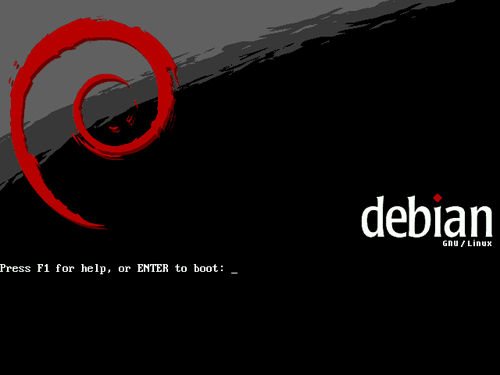Het ontwikkelteam van Debian Installer heeft laten weten dat ze de tweede release candidate van Debian Installer voor de 3.1r5-uitvoering hebben uitgebracht. De nieuwe versie kan via deze pagina vanaf een aantal http- en ftp-mirrors en BitTorrent gedownload worden voor diverse platformen. Installer is het installatieprogramma van Debian GNU/Linux dat op de planning staat om helemaal af te zijn met de release van de 4-serie van Debian, ook wel Etch genaamd. Wat er allemaal veranderd is in de nieuwe Installer kan hieronder gelezen worden. Gezien dat dit een Release Candidate is, zijn er ook nog bugs die opgelost moeten worden. Voor het gemak hebben de ontwikkelaars deze nog te fixen bugs in dit document neergezet:
Improvements in this release of the installer:No longer supported as of this release:
- This new version of the installer uses and installs the 2.6.18 kernel.
- Resizing Windows Vista NTFS partitions is now supported.
- Both the regular (newt frontend) and graphical (gtk frontend) installer now offer a theme using high-contrast colors and increased font size for visually impaired people. This theme can be activated by adding the parameter "theme=dark" when booting the installer.
- There have been several important bug fixes and usability improvements in the graphical installer. Most importantly, it is now possible to switch consoles on amd64. Information about the graphical installer and the most important differences between the graphical and regular installer has been added in an appendix in the installation guide.
- In expert mode or by using preseeding it is possible to select the FTP protocol instead of HTTP to access a Debian mirror. The hostname of an FTP mirror can only be entered manually, selection from a list is not supported.
- The time-out when searching for a security mirror has been reduced significantly. This may mean that a security mirror will not be found if the network connection is bad, but it also means that the time spent waiting if no security mirror is available at all is now acceptable.
- It is now possible to blacklist a (driver) module by setting a special parameter when the installer is booted. This may help to work around buggy or conflicting kernel modules. See the installation guide for details.
- Architecture specific:
- arm: there have been several improvements for the NSLU2:
- the kernel now uses the Ethernet driver developed by Christian Hohnstaedt
- the kernel also adds LED support and fixes real time clock support
- selection of the correct timezone during installation
- powerpc: RAID installation with macintosh partition tables should now work
- s390: most usability issues from RC1 have been fixed
- The following additional languages are now supported: Belarusian, Kurdish; and only in the graphical installer: Georgian, Malayalam.
Known issues in this release:
- The boot parameter to enable the `auto mode' for preseeding has been changed from auto-install/enabled to auto-install/enable for consistency with rescue mode. The auto alias and boot option remain valid.
With this release of the installer, Debian also offers some new types of CD/DVD images:
- The installer is currently not able to resize ext3 partitions that have the dir_index and/or resize_inode features enabled. This includes ext3 partitions created with the Etch installer. It is possible to manually resize ext3 partitions from a shell during the installation.
- The sky2 network driver is known to be broken in kernel version 2.6.18.dfsg.1-11 and may cause kernel panics.
- There are still a few issues for some PowerPC subarchitectures.
- For sparc32 CD-ROM support is broken in the esp kernel driver; use the netboot installation method instead.
- Known issues for the graphical installer:
- some non-US keymaps are not fully supported (deadkeys and combining characters do not work);
- touchpads should work, but support may not be optimal; if you experience problems, you should use an external mouse instead;
- limited support for creating encrypted partitions;
- should work on almost all PowerPC systems that have an ATI graphics card, but is unlikely to work on other PowerPC systems.
[break]
- a full CD that installs a KDE desktop environment by default
- a full CD that installs an Xfce desktop environment by default
- a multi-architecture CD for i386/amd64/powerpc and one for alpha/hppa/ia64 that effectively behave like a netinst CD (the images contain the base system for all three architectures)
- a multi-architecture DVD for i386/amd64/powerpc which also includes source packages; this makes the image ideal for promotion purposes at trade shows and other events


:fill(white):strip_exif()/i/2000606466.jpeg?f=thumbmedium)